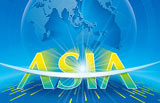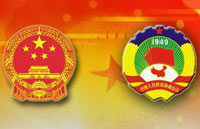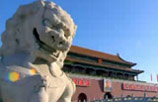Commentary: New US-Japan defense guidelines inject instability in East Asia
Updated: 2015-04-29 00:11
By Tian Dongdong(Xinhua)
|
|||||||||||
By unveiling the new US-Japan defense guidelines, Washington has simply signed a Faustian pact with a Tokyo that has a knack of alienating its neighbors and creating instability in East Asia.
The revision of the guidelines, its first update in 18 years, has granted Japan's Self Defense Forces (SDF) a more ambitious and assertive role at regional and global level.
Washington's calculation is clear and simple: It wants to use Japan as a tool to amplify its "Pivot to Asia" strategy, which many believe is largely designed to cage China's rising influence in the Asia-Pacific region.
However, the shrewd calculator had brought its eggs to a bad market this time, and will ultimately pay the piper for its blind trust toward a recidivous trouble-maker.
For starters, a man who never admits his fault is not trustworthy, so is a government that attempts to whitewash its history of aggression.
The international community has been urging Shinzo Abe to apologize for Japan's war crimes during World War II, but the Japanese prime minister instead used terms such as "heartaches" -- apparently a carefully chosen word -- to gloss over the issue.
By lifting constrains on the SDF, the United States is actually emboldening a warmonger whose martial zeal had been proved by history repeatedly and asking it to cover its back.
Second, Washington's move seems to testify to an old saying that every man has a fool in his sleeve. While taking advantage of its tamed ally, Uncle Sam is also being taken by Abe as a tool to fulfill his dream, as updating the defense guidelines is a crucial step for Abe to reinterpret Japan's pacifist constitution, which bans Japan from dispatching SDF soldiers on foreign soil.
In other words, Washington is shooting itself in the foot, as no one on earth, even America itself, could tell clearly the intention of a fully armed Japan, given the bitter memory of Japanese diplomatic fraud on Washington before the Pearl Harbor attack in 1941.
Thirdly, maintaining peace and stability in the Asia-Pacific does not necessarily call for a strengthened US-Japan alliance. Many suspect the partnership is designed with at least one eye on China, but the region has plenty of room for all the three, and China is fully committed to the path of peaceful development.
Therefore, the uncalled-for updating would cast a shadow over the hard-won positive momentum in the region and bring about more uncertainties in regional security.
As Chinese President Xi Jinping has put it, a stronger China will present development opportunities, rather than a threat. It is highly advised that politicians in Washington and Tokyo could set aside their Cold War mentality and learn to coexist with China in a peaceful and mutually beneficial way.
Related Stories
US should keep Abe on right side of history 2015-04-28 07:19
S.Korean civic groups urge Abe for sincere apology in US Congress 2015-04-27 17:49
Abe needs to weigh sense over sensibility during US trip 2015-04-27 16:51
US must not ignore Abe's insult to history 2015-04-27 10:47
Abe kicks off week-long visit to US 2015-04-27 09:07
Today's Top News
Nepalis wait for quake help as death toll passes 4,000
61 suspects back home to be tried
PLA's Moscow debut confirmed
DPRK, Russia ink protocol after inter-governmental meeting
Belt and Road Initiative a boost to China, regional economy
China rescue team starts work in Nepal
At least 20 dead in Tibet following Nepal quake
Opinion: China leads in many high-speed rail aspects
Hot Topics
Lunar probe , China growth forecasts, Emission rules get tougher, China seen through 'colored lens', International board,
Editor's Picks

|

|

|

|

|

|






